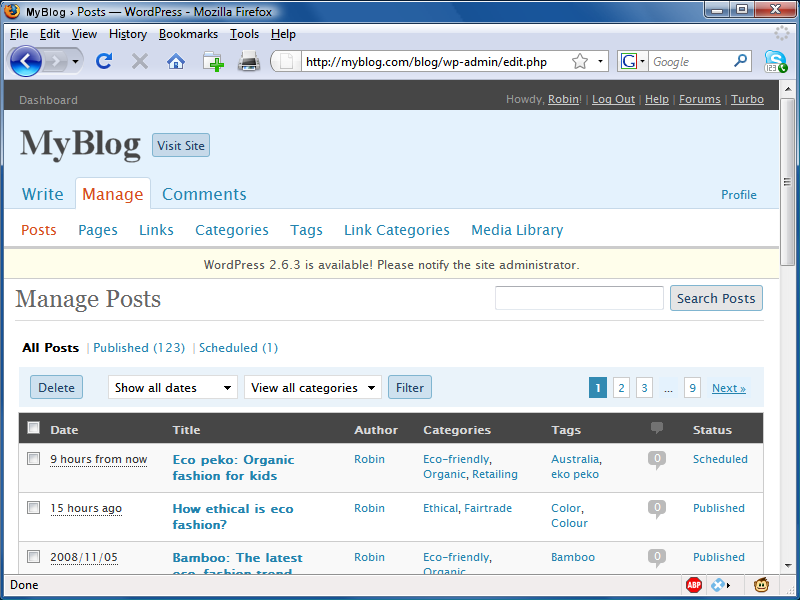PHP Dynamic Linking
Because PHP is a programming language, and the output from it can be completely different for each user, it’s possible for an entire website to run from a single PHP web page. Each time the user clicks on something, the details can be sent back to the same web page, which decides what to do next according to the various cookies and/or other session details it may have stored.
But although it is possible to build an entire website this way, it’s not recommended, because your source code will grow and grow and start to become unwieldy, as it has to take account of every possible action a user could take.
Instead, it’s much more sensible to split your website development into different parts. For example, one distinct process is signing up for a website, along with all the checking this entails to validate an email address, checking whether a username is already taken, and so on.
A second module might well be one for logging users in before handing them off to the main part of your website. Then you might have a messaging module with the facility for users to leave comments, a module containing links and useful information, another to allow uploading of images, and so on.
As long as you have created a means of tracking your user through your website by means of cookies or session variables (both of which we’ll look at more closely in later chapters), you can split your website up into sensible sections of PHP code, each one self-contained, and therefore treat yourself to a much easier future developing each new feature and maintaining old ones.
Dynamic Linking in Action
One of the more popular PHP-driven applications on the web today is the blogging platform WordPress (see Figure 4-5). As a blogger or a blog reader, you might not realize it, but every major section has been given its own main PHP file, and a whole raft of generic, shared functions have been placed in separate files that are included by the main PHP pages as necessary.
The whole platform is held together with behind-the-scenes session tracking, so that you hardly know when you are transitioning from one subsection to another. So, as a web developer, if you want to tweak WordPress, it’s easy to find the particular file you need, make a modification, and test and debug it without messing around with unconnected parts of the program.
Next time you use WordPress, keep an eye on your browser’s address bar, particularly if you are managing a blog, and you’ll notice some of the different PHP files that it uses.
This chapter has covered quite a lot of ground, and by now you should be able to put together your own small PHP programs. But before you do, and before proceeding with the following chapter on functions and objects, you may wish to test your new knowledge on the following questions.
Get Learning PHP, MySQL, and JavaScript now with the O’Reilly learning platform.
O’Reilly members experience books, live events, courses curated by job role, and more from O’Reilly and nearly 200 top publishers.


